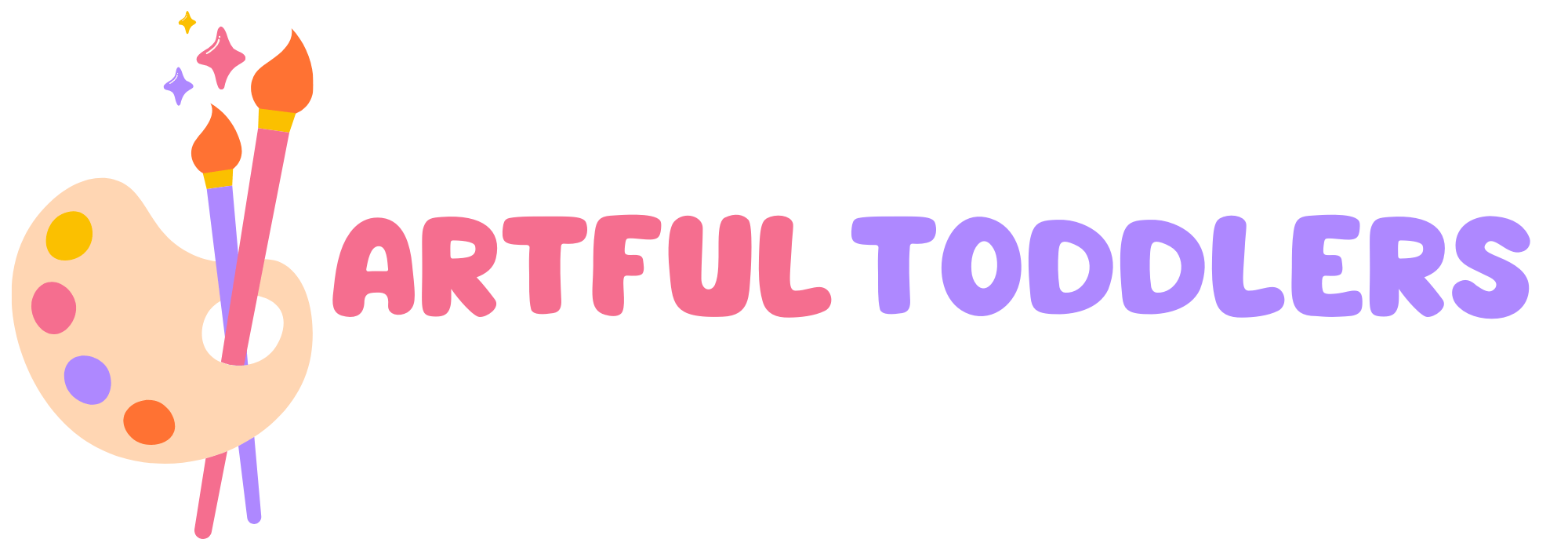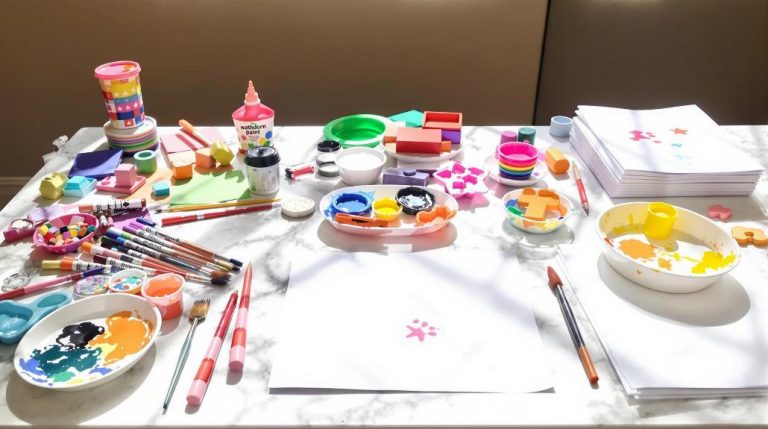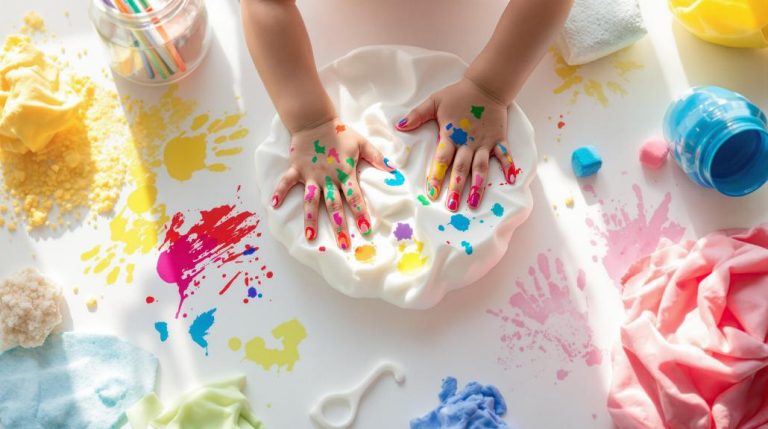
Looking for quick, engaging sensory art projects for your toddler?
Try no-mess painting with colourful ice blocks, creating unique patterns while developing fine motor skills.
You can transform bubble wrap into foot-based artwork by securing it to your child’s feet and dipping it in tempera paint.
Create exciting foam explosions by mixing baking soda, food colouring, and vinegar for a colourful chemical reaction.
Design sticky collages using contact paper and various materials, or investigate water bead sensory bags for tactile development.
Each project takes just minutes to set up and offers beneficial learning opportunities.
These hands-on activities are just the beginning of your toddler’s creative journey.
Key Takeaways
- Create a no-mess painting activity using frozen coloured ice cubes on watercolour paper with popsicle sticks for easy handling.
- Set up a bubble wrap foot painting station with washable tempera paint for active toddlers to make unique footprint patterns.
- Make foam colour explosions by combining coloured baking soda with vinegar and dish soap for exciting sensory reactions.
- Design sticky collages using contact paper and materials like tissue paper and leaves for tactile exploration.
- Assemble water bead sensory bags with hydrated beads and optional glitter for safe squishing and poking activities.
1. No-Mess Painting With Ice
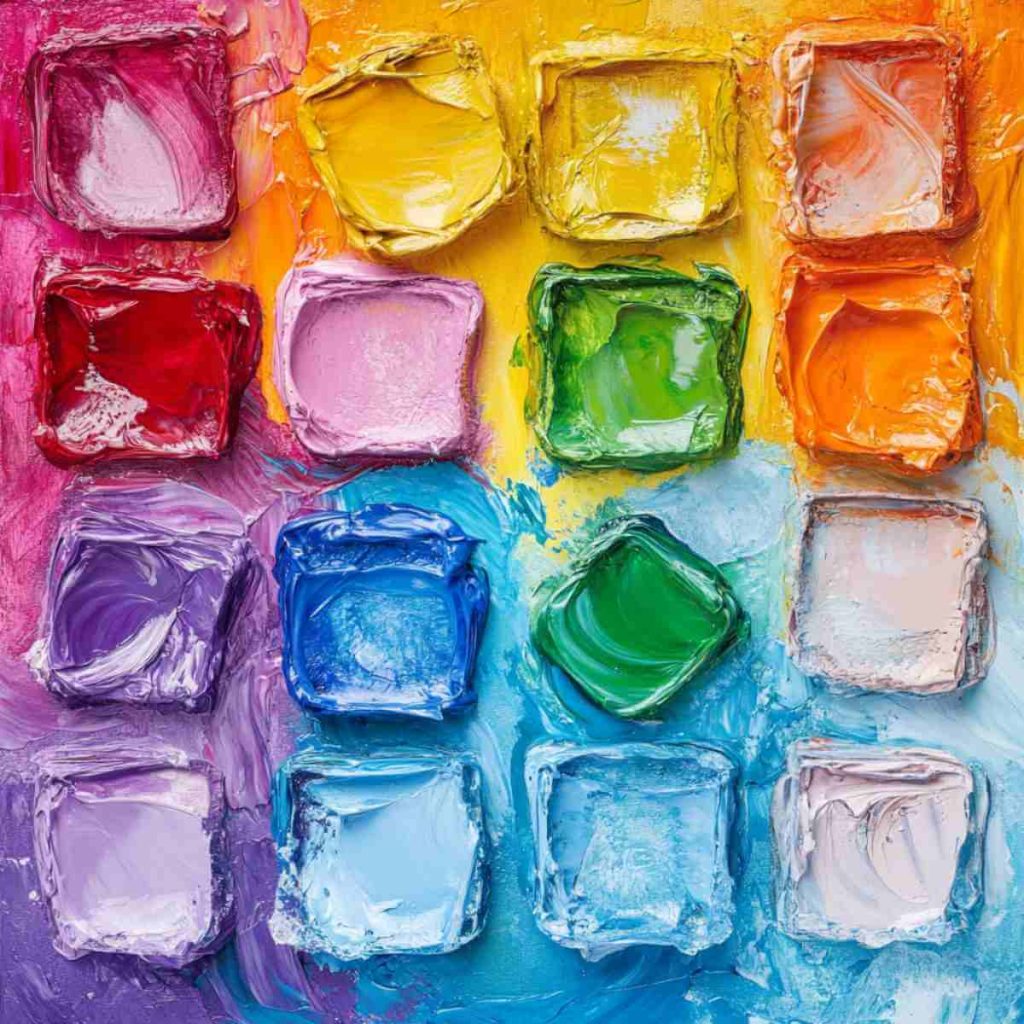
Looking for a clean and engaging art activity for your toddler? No-mess painting with ice offers a unique way to create colourful masterpieces while developing essential skills.
Fill ice cube trays with water and food colouring to get started and freeze them overnight. Pyrex trays and lids work exceptionally well for creating larger ice blocks.
Set up a workspace with watercolour paper and provide popsicle sticks for your little one to manipulate the ice blocks.
Add a splash of warm water to help the ice start melting, making it easier to create vibrant patterns.
As your toddler investigates the ice blocks, they’ll develop fine motor skills and hand-eye coordination while learning about colour mixing and temperature changes.
Try freezing popsicle sticks directly into the ice blocks or using larger containers for bigger ice chunks for easier handling.
2. Bubble Wrap Foot Art
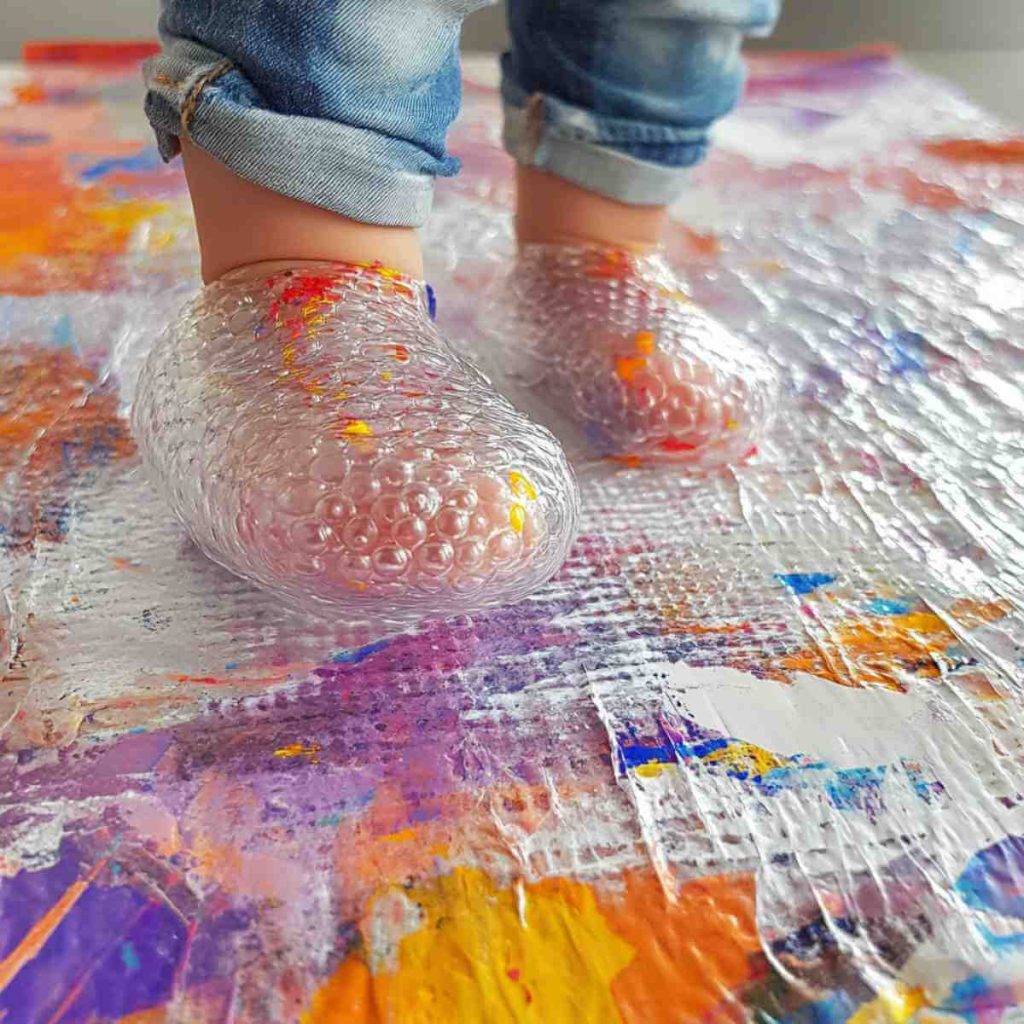
Transform an ordinary afternoon into a sensory adventure with bubble wrap foot art. You’ll need bubble wrap, washable tempera paint, and paper.
Secure the bubble wrap under your toddler’s foot with tape, ensuring it’s large enough to cover their sole completely.
If working with multiple toddlers, consider breaking into smaller groups of children.
Let your little one dip their bubble-wrapped foot into the paint, then watch as they create unique patterns by walking, stomping, and jumping on paper.
You can use multiple colours to make the artwork even more exciting.
This activity isn’t just fun – it helps develop your child’s gross motor skills and coordination while teaching them about colours and textures.
Try setting up outdoors for easier cleanup, or use a large tray containing the paint. Remember to supervise closely to prevent slipping.
3. Foam Color Explosion
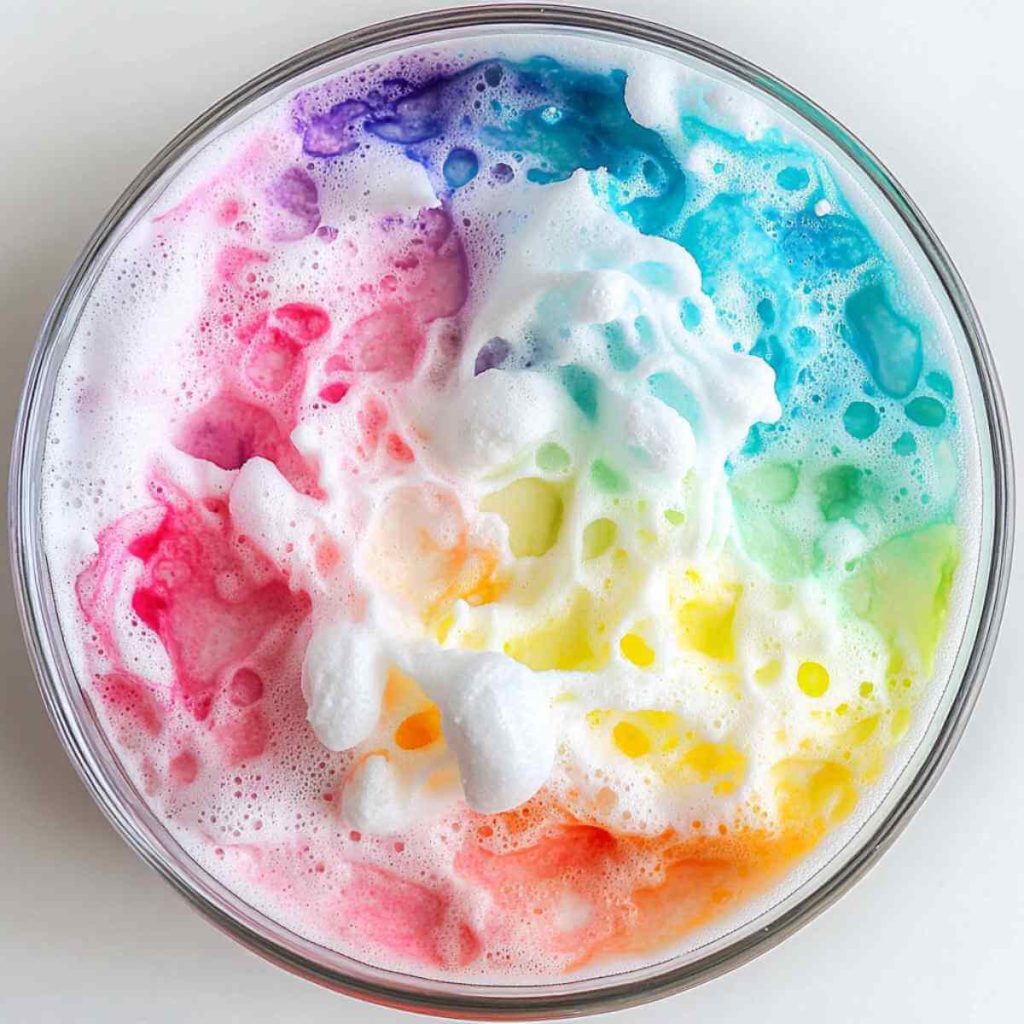
Create a magical science experiment with this foam colour explosion project that combines sensory play with basic chemistry.
Start by mixing baking soda with food colouring in a shallow container, then cover it with an additional layer of plain baking soda to hide the colours.
You’ll need vinegar to mix with dish soap for extra foaminess.
Let your toddler squeeze or pour the vinegar mixture onto the baking soda, and watch their eyes light up as colourful foam erupts!
The chemical reaction between the ingredients creates carbon dioxide bubbles, while the hidden colours emerge in a fascinating display.
This activity is perfect for sensory exploration through both sight and touch.
For safety, supervise your child throughout the activity and remember to wear old clothes. You can use different containers, like muffin tins or water tables, to contain the messy fun.
4. Contact Paper Sticky Collage
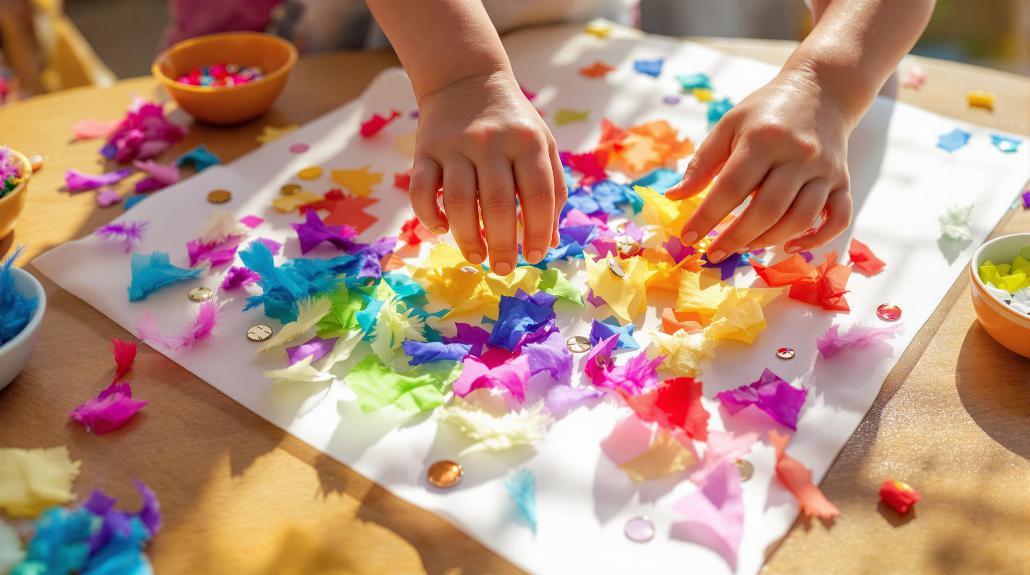
This simple yet enchanting art project uses contact paper as a sticky canvas to introduce toddlers to texture and spatial relationships.
You’ll start by securing sticky-side-up contact paper to your work surface. Then, let your toddler investigate materials like tissue paper, leaves, and colourful shapes.
Watch as they discover how items stick to the surface, developing their fine motor skills while making creative choices.
The activity is perfect for no-mess cleanup since materials adhere directly to the sticky surface.
Once they’ve finished placing their materials, seal their masterpiece with another layer of contact paper.
You can enhance the artwork by adding permanent marker designs or using paper punches to create interesting shapes.
For variety, try making themed collages or suncatchers with translucent materials. This versatile activity grows with your child’s abilities.
5. Water Bead Sensory Bags
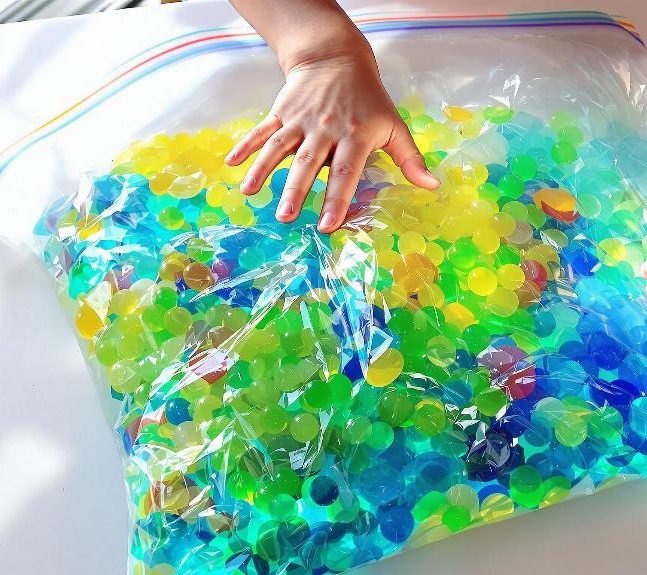
Water bead sensory bags offer toddlers an enchanting, mess-free way to explore texture and movement.
These intriguing tools are easy to make. They use clear zip-close bags filled with hydrated water beads and a small amount of water.
Remember to double-seal the bags and secure them with tape for safety. If water beads aren’t available, pony beads make excellent alternatives.
You can enhance your toddler’s play experience by adding elements like hair gel or glitter or taping the bag to a window for light exploration.
While your little one squishes and pokes the colourful beads, they develop vital fine motor skills and sensory awareness.
Remember to supervise closely during play and regularly check for wear and tear.
You’ll love watching your child’s fascination as they discover the soothing, therapeutic benefits of these simple yet effective sensory tools.
